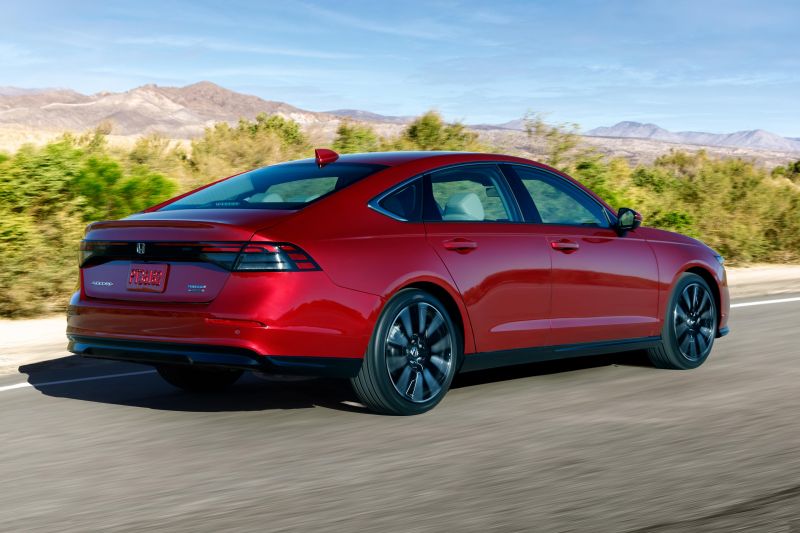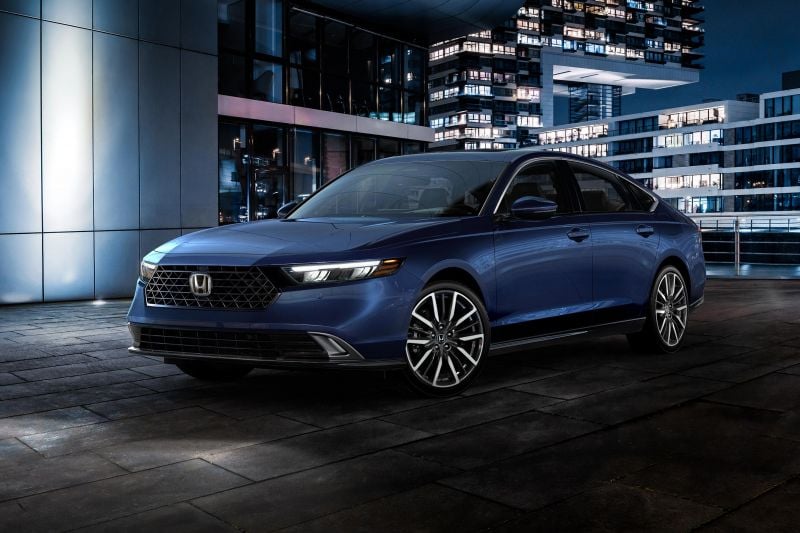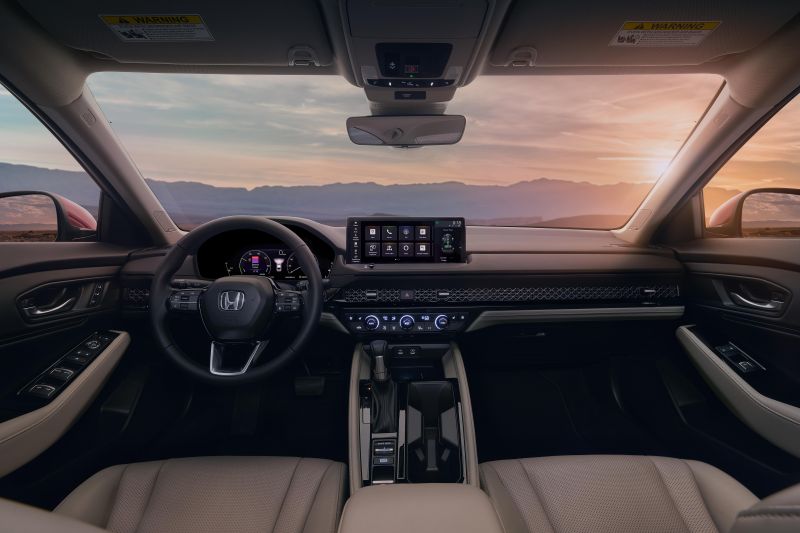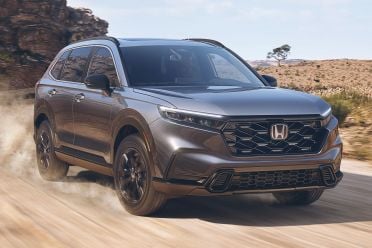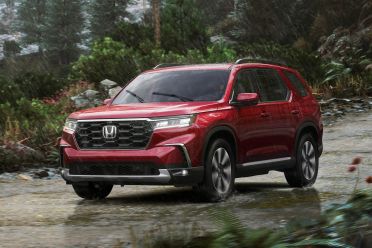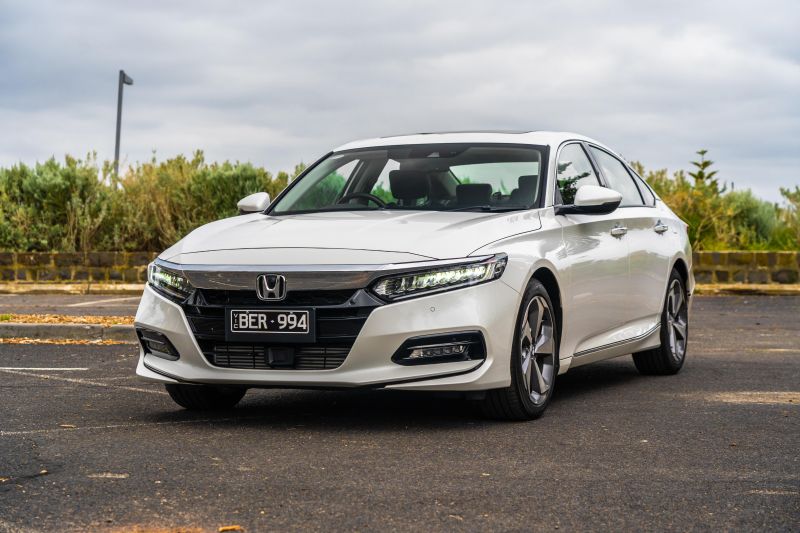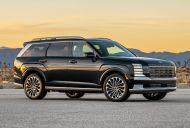Honda has revealed its 11th-generation Accord for the US market with a hybrid-heavy line-up, but it’s unclear when it’ll come here.
US-market Accords have come from Honda’s Marysville, Ohio plant for 40 years now, while ours come from Thailand – and Honda Australia says the local-spec model operates on “a separate model lifecycle”.
“Accord remains an important global nameplate for Honda, with a very loyal and valued customer base here in Australia, but it is too early for us to confirm any details about plans for the next generation model,” the Honda Australia spokesperson told us late last month.
“The current model will continue in Australia for some time yet and it continues to perform strongly as a supporting model in the line-up.”
MORE: 2022 Honda Accord review
Honda predicts hybrid models will account for 50 per cent of Accord sales in the US with the new generation, and the previous flagship 2.0-litre turbo four – never offered here – has been discontinued.
The more powerful fourth-generation hybrid mates a 2.0-litre Atkinson cycle, direct-injected four-cylinder engine with two electric motors mounted side-by-side, for total system outputs of 152kW of power and 335Nm of torque – down 6kW but up 20Nm on the current local-spec hybrid.
It produces 9kW and 74Nm more than the base turbocharged 1.5-litre four-cylinder engine, which has received enhancements like an upgraded direct-injection system and a high-rigidity crankshaft and oil pan to cut down on engine noise.
The 1.5-litre continues to be mated with a continuously variable transmission, which has also been updated to reduce noise.
The hybrid features Honda’s Linear Shift Control, designed to mimic the rev feel of a conventional petrol engine shifting gears under acceleration. The 1.5-litre’s CVT also features simulated gear changes, though only the hybrid has selectable Sport and Individual modes.
Honda says the new Accord is based on its enhanced global architecture and has greater chassis rigidity than before with stiffer body supports and new front brace bars.
The four-wheel independent suspension has been retuned for a more engaging driving experience, while new front suspension damper mount bearings and ball joints are said to improve steering smoothness.
The Accord is 71mm longer than its predecessor with a 10mm wider track, and features cleaner flanks and detailing.
A sharp feature line runs down the side of the car, and the Accord retains a fastback-like silhouette. Honda also touts the Accord’s airy greenhouse and slim A-pillars, aiding visibility.
Darkened LED headlights are standard, as are more conventionally styled LED tail lights.
Inside, a 10.2-inch digital instrument cluster is standard, while the two lowest trims use a 7.0-inch touchscreen infotainment system with wired Android Auto and Apple CarPlay.
Step up higher in the range and that’s replaced with a new 12.3-inch unit with wireless smartphone mirroring, while the flagship Touring features Honda’s first integration of Google built-in with connectivity for Google Assistant, Google Maps and Google Play, among other apps and services.
All Accords support over-the-air software updates.
Honda has retained a physical volume knob with the larger touchscreen, and says it has used premium materials throughout the cabin with “close attention paid to the operation of all switchgear and controls for a premium feel”.
Metal mesh trim extends across the dashboard, like on the Civic, and conceals the air vents. There’s also more extensive use of piano black trim.
Honda says the Accord features new front Body Stabilizing Seats, with a new-generation seat frame designed to more firmly hold your body and reduce fatigue on long drives.
The top-spec Touring comes with ventilated front seats, heated rear seats, wireless phone charging, a six-inch head-up display and a 12-speaker Bose sound system with Bose Centerpoint and Bose SurroundStage technology.
Features also found in some lesser Accords include power-adjustable front seats, a sunroof, heated front seats, leather upholstery, and four USB-C outlets.
Honda also offers remote vehicle tracking and immobilisation.
There’s an updated suite of active safety and driver assist features as standard, with enhanced camera and radar and longer-range blind-spot monitoring.
The adaptive cruise control and lane-keep assist have been updated to feature “more natural responses”, while traffic jam assist is a new addition.
Traffic sign recognition and rear seat reminders are standard, as are 10 airbags including dual front knee ‘bags.
The reveal of the new Accord follows the unveiling of the new, fourth-generation US-built Pilot, the 11th-generation Civic, and the new sixth-generation CR-V as Honda overhauls its line-up.
It’s also recently launched two new HR-V SUVs – one for markets like Australia, another one for North America that’s also expected to come here with a different badge.
While the outgoing 10th-generation Accord entered production in the US in 2017, Thai production didn’t begin until 2019.
Honda introduced the current Accord to Australia in 2019, and it’s been a slow seller since launch even relative to its rivals in what’s a shrinking segment.
To the end of October, Honda has sold only 92 examples in Australia. That makes it the slowest selling vehicle in the mainstream mid-sized segment, behind the Peugeot 508 (117 sales).
However, Honda Australia says “demand continues to exceed current supply constraints, particularly for the hybrid variant”.
It’s currently offered in a single trim level, with either a 140kW/260Nm turbo 1.5-litre four or a 158kW/315Nm 2.0-litre hybrid.
MORE: Everything Honda Accord





